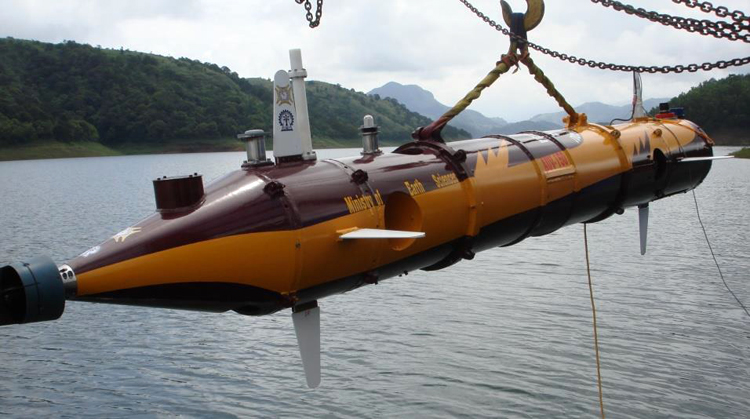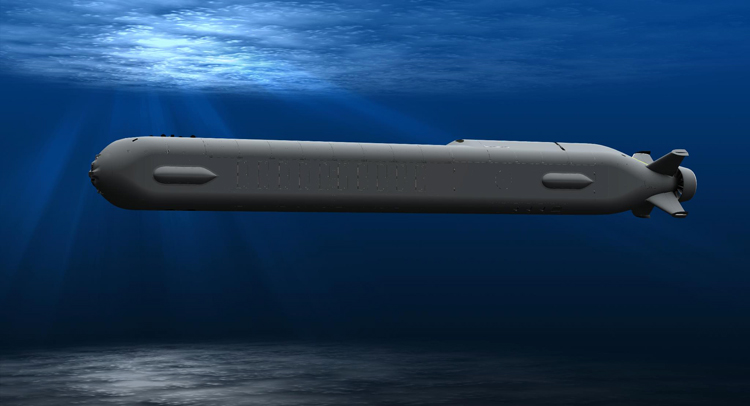INDIAN ARMED FORCES CHIEFS ON OUR RELENTLESS AND FOCUSED PUBLISHING EFFORTS

The insightful articles, inspiring narrations and analytical perspectives presented by the Editorial Team, establish an alluring connect with the reader. My compliments and best wishes to SP Guide Publications.

"Over the past 60 years, the growth of SP Guide Publications has mirrored the rising stature of Indian Navy. Its well-researched and informative magazines on Defence and Aerospace sector have served to shape an educated opinion of our military personnel, policy makers and the public alike. I wish SP's Publication team continued success, fair winds and following seas in all future endeavour!"

Since, its inception in 1964, SP Guide Publications has consistently demonstrated commitment to high-quality journalism in the aerospace and defence sectors, earning a well-deserved reputation as Asia's largest media house in this domain. I wish SP Guide Publications continued success in its pursuit of excellence.
- MoD initiates comprehensive review of Defence Acquisition Procedure 2020, pushes for defence reforms
- G7: The Swansong
- Kalinga Connect: South Asia to Polynesia
- Advanced MRSAM for India for a greater firepower
- Must Credit DRDO for Operation Sindoor, now what is next for defence R&D?
- Operation Sindoor | Day 2 DGMOs Briefing
- Operation Sindoor: Resolute yet Restrained
Indigenous Armed XLUUV
Ministry of Defence (MoD) has initiated a project to design and develop an Extra Large Unmanned Underwater Vehicles (XLUUV). Indian Navy is interested in procuring up to 12 XLUUVs once a prototype is built and clears all trials.
 |
The Author is Former Director General of Information Systems and A Special Forces Veteran, Indian Army |

Autonomous underwater vehicles (AUVs) are robots travelling underwater without requiring continuous input from an operator albeit controlled and powered from the surface by an operator/pilot via an umbilical or using remote control. In military applications an AUV is generally termed unmanned undersea vehicle (UUV). The US first developed an AUV in 1957, named ‘SPURV’ (Special Purpose Underwater Research Vehicle) for studying diffusion, acoustic transmission, and submarine wakes. Global development in AUVs in modern times include the Crown-Of-Thorns Starfish Robot (COTSB) that use neural network to identify starfish and inject them with bile salts to kill them.
Aside from commercial applications like seafloor exploration for building subsea infrastructure for offshore oil installations, military applications of AUVs include: intelligence, surveillance, and reconnaissance; mine countermeasures; anti-submarine warfare; information operations; time-critical strikes; payload delivery; oceanography, and; communication/navigation network nodes.
CMEIR has built the indigenous AUV called ‘AUV-150’ thatis primarily aimed at coastal security with tasks like mine counter measures, coastal monitoring and reconnaissance
The Central Mechanical Engineering Research Institute (CMEIR) at Durgapur in West Bengal has built the indigenous AUV called ‘AUV-150’. The project was sponsored by the Ministry of Earth Sciences and had technical assistance from IIT-Kharagpur. Built to operate 150 metres under the sea and have cruising speed of up to four knots, the AUV-150 is primarily aimed at coastal security with tasks like mine counter measures, coastal monitoring and reconnaissance. However, it can also be used for tasks like: mapping of sea-floor and minerals; monitoring environmental parameters like current, temperature, depth and salinity; study aquatic life, and; cable and pipeline surveys.
Cylindrical in shape with streamlined fairing to reduce hydrodynamic drag, the AUV-150 is embedded with advanced power, propulsion, navigation, and control systems. The AUV includes a pressurised cabin which is necessary for the diving and flotation system to work properly; this also helps to increase its sealing power against water leakage into the cabin. The AUV-150 is to weigh 490 kg, is 4.8 metres long and have a diameter of 50 cm.

The AUV-150 is to be equipped with CTD or conductivity-temperature-depth recorder and several sensors that can measure orientation, current and speed. The underwater video camera can send wireless video pictures from underwater to a monitor above water surface along with side scan sonar. The first series of sea trials of the AUV-150 were held in July 2011 off the Chennai coast with the diving depth increased in stages, finally reaching the specified depth of 150 metres.
Now recent news reveals that the Ministry of Defence (MoD) has initiated a project to design and develop an Extra Large Unmanned Underwater Vehicles (XLUUV). A document released in March 2023 by the MoD indicates that the Indian Navy is interested in procuring up to 12 XLUUVs once a prototype is built and clears all trials. According to the document, the XLUUV may have a maximum length with payload of up to 50 meters, width of up to five meters, height no more than 10 meters and gross weight without ballast less than 300 tonnes. The XLUUV project was accorded Approval-in-Principle (AiP) on January 16, 2023, with prototype development expected by 2025. Other Make-I projects that were accorded AiP on the same day were: 15 ship-borne 30kW laser weapon systems, eight 12 MW electric propulsion systems and 55 gas turbine generators of 4 MW class.
The XLUUV project was accorded Approval-in-Principle (AiP) on January 16, 2023, with prototype development expected by 2025
The roles intended for the XLUUV include: intelligence, surveillance and reconnaissance (ISR), anti-submarine warfare, anti-surface warfare and mine warfare. Autonomous features are a key requirement under which the vessel should be capable of deploying from a pier, conducting operations in shallow and restricted waters and returning to harbour on its own. An external payload of up to 10 tonnes of armament is also under consideration, with the MoD probing the feasibility of mounting two 533mm torpedo tubes and mine laying capability for the XLUUV.
Sensors fitted on the XLUUV would include a flank array sonar, towed array sonar, bow sonar, multi-beam echo sounder sub-bottom profiler, collision avoidance sonar, I band radar, ESM system and a periscope mast with EO/IR cameras. It would be capable of communicating with other platforms and control stations using SATCOM and underwater communication systems. The XLUUV is required to be capable of being transported by motherships and trailers on land. Submerged maximum speed is specified as at least 8 knots with cruising speed of over 4 knots. Propulsion options may include integrated thrusters or propellers using electric motors. The XLUUV is mandated to have a maximum endurance of over 45 days using either Li-Po/Li-ion batteries or a fuel cell based Air Independent Propulsion (AIP) system as the power source. A diesel generator may be used to recharge any batteries.
An external payload of up to 10 tonnes of armament is under consideration, with the MoD probing the feasibility of mounting two 533mm torpedo tubes and mine laying capability for the XLUUV
Major shipbuilders like Mazagon Dock Shipbuilders Limited (MDL) and Larsen & Toubro (L&T) could be expected to take part in the project. MDL had issued an expression of interest in March 2022 for collaboration with global firms in design, development and construction of XLUUVs. L&T has a portfolio of AUVs and offers midget submarine designs to the Navy. Obviously, many other private industries and MSMEs would need to be integrated into the project. Interestingly, Germany’s Modifiable Underwater Mothership, US Navy’s Orca XLUUV and Russia’s Sarma-D are all in the prototyping phase. China is also working on multiple XLUUV projects.
The Indian Navy has serious voids in underwater capabilities. There are significant delays in six diesel-electric submarines with sea proven AIP to be built under Project-75i. Also no time schedule has been announced for the eight smaller High Endurance Autonomous Underwater Vehicles (HEAUV) planned to be inducted; containerized eight ton vessels capable of anti-submarine warfare and mine countermeasure operations with an endurance of over two weeks. These need to be expedited. Finally, the procurement of about a dozen armed XLUUVs would certainly boost the underwater capabilities of the Indian Navy.





